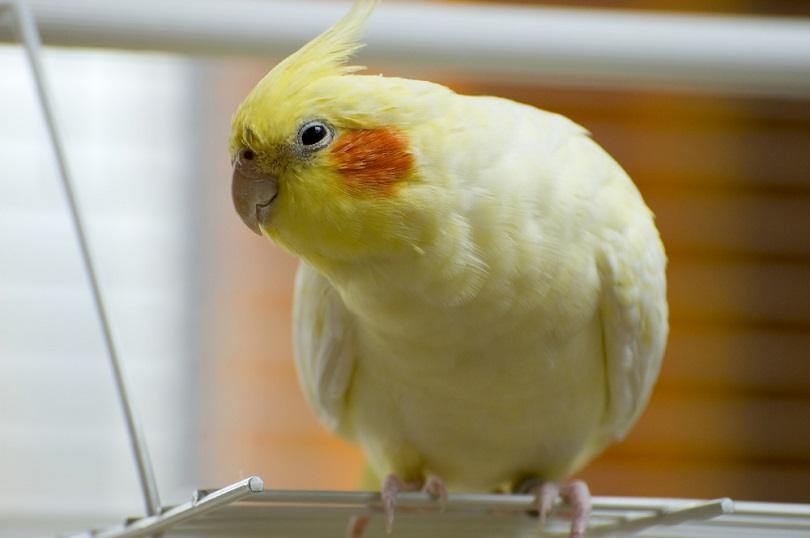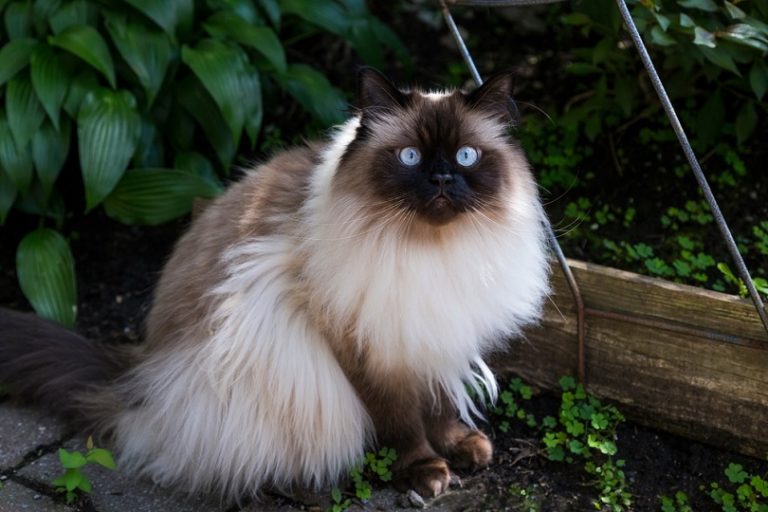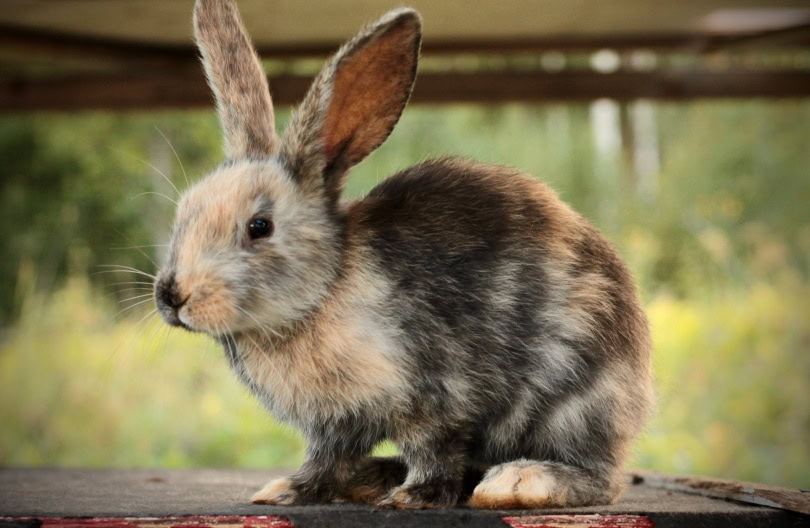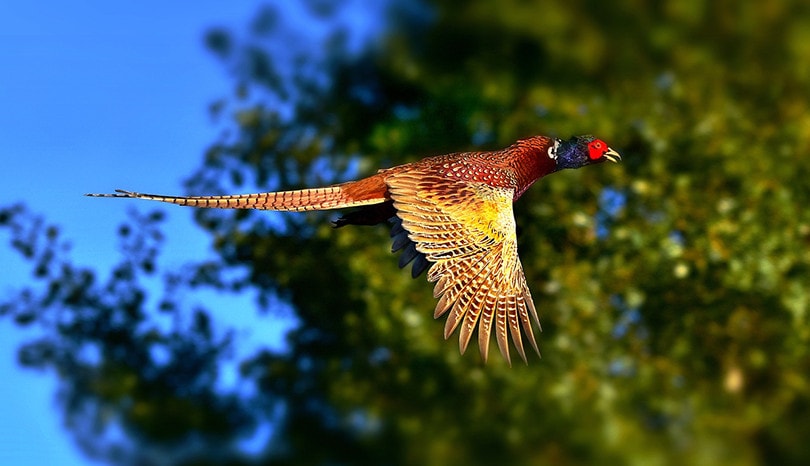Click to Skip Ahead
Cockatiels are remarkable creatures with highly sociable personalities. Many bird lovers adore having a cockatiel in their home because they are small, friendly, and pretty simple to care for. They are socialites who love spending time with their people and other birds, and they get very lonely if they have neither.
You might be able to pick the Lutino cockatiel out of a lineup because of their perfectly round, rosy cheeks and fancy head feathers. Most of them will let you pick them up on your finger, and they love getting neck rubs. So, if you’re considering a cockatiel, let’s learn more about the loveable little Lutino.
Lutino Cockatiel Species Overview
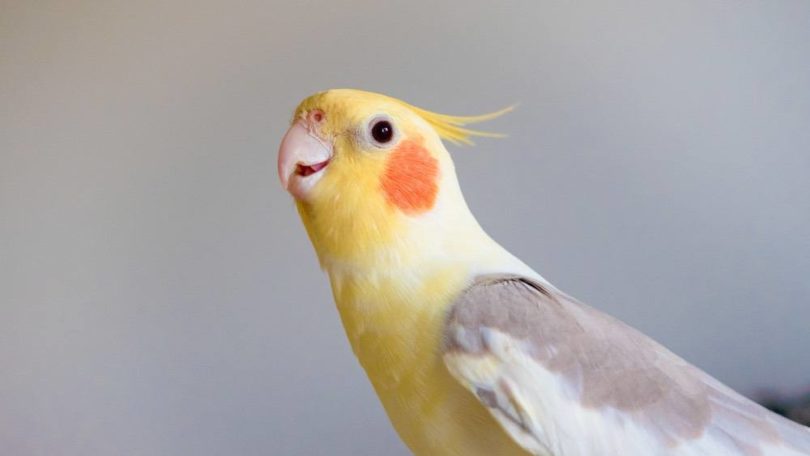
| Common Name: | Lutino Tiel, Moonbeam Cockatiel |
| Scientific Name: | Nymphicus hollandicus |
| Adult Size: | 12–13 inches |
| Life Expectancy: | 16–25 years |
Origin and History
Lutino cockatiels don’t exist in the wild. This mutation came directly from breeders and has been a favorite because of the Lutino’s appearance and temperament. Pied cockatiels came first, and Lutinos followed. They haven’t been around long and gained recognition in 1958.
The first Lutino was owned by Cliff Barringer of Florida. They stem from the gray cockatiel, native to Tasmania and parts of Australia. These tropical cuties have come so far since their original domestication.
Initially, the Lutino was prone to developing a bald spot behind their head feathers. But with proper breeding, this genetic defect has been bred out almost completely—though it is still possible.

Temperament
Lutino cockatiels are generally very mild-tempered and easy to keep. They love affection, company, and a variety of playthings. Your Lutino will be a highly social creature to their humans and bird friends.
Like most birds, lutinos can get very depressed if they’re left alone for long periods. They thrive on interaction with other creatures, and loneliness can cause a wide range of health and behavioral problems. Proper socialization is required when you own one of these amiable parrots.
They’re usually very agreeable, but males are slightly more aggressive than females. You should set aside time to spend with your cockatiel, involving affection, training, and playing.
Cockatiels are incredibly intelligent and must be mentally stimulated regularly. You can find several fun DIY projects and bird toys on the web that your cockatiel will surely enjoy. They also love puzzles that get their little minds working.
As you may naturally suspect, they love the outdoors. Of course, it’s not advised to let your cockatiel loose outside, but they will love a good window seat or trips to the porch so they can vocally interact with other birds.
- Highly social
- Intelligent
- Interactive
- Friendly
- Affectionate
- Can be needy
- Sometimes aggressive
- Particular
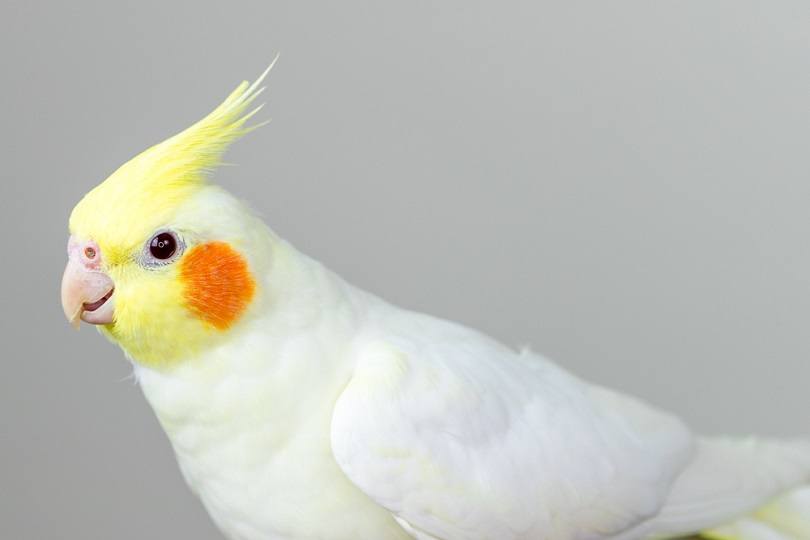
Speech & Vocalizations
Lutinos don’t have an extensive vocabulary in the human sense, but they have highly communicative vocalizations. Cockatiels use various pitches and sounds to communicate with their flock in their natural habitats.
All parrots are more vocal in the early morning or evening—cockatiels are no exception. That doesn’t mean they won’t let out chirps and chatters throughout the day; they will communicate anytime they feel the need.
Males are likely to sing, showing incredible joy and happiness anytime the mood strikes. Females are a little quieter, but they still sing when they’re happy, sad, lonely, or excited.
- Alert—something is going on!
- Search—where did mom or dad go?
- Happy—coos of love
- Bothered—they don’t like what’s happening
- Tired—it’s time for bed!
- Curious—what on earth is that thing?
Watching your Lutino’s body language and listening to their noises can tell you a lot about what they want to communicate.

Lutino Cockatiel Colors and Markings
Lutino cockatiels have distinct features that set them apart from other cockatiels. Males and females have the same color scheme: white bodies, yellow heads, and bright, rosy circles on their cheeks. The Lutino has a high head crest and long tail feathers. They grow roughly 12 to 13 inches from the crest to the tail tip. They have impressively bold features with eye-catching colors.
Lutinos usually have the same overall appearance. However, they can sometimes have pied markings, which means they have noticeable gray spots on their wings.
If you’re curious about the many color mutations and types of cockatiels, we can’t recommend the book The Ultimate Guide to Cockatiels enough!
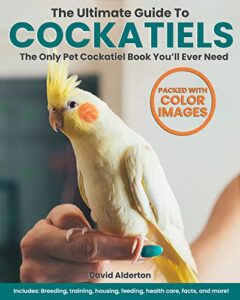
This beautiful book (available on Amazon) features a detailed, illustrated guide to cockatiel color mutations, plus helpful tips on housing, feeding, breeding, and generally taking excellent care of your birds.
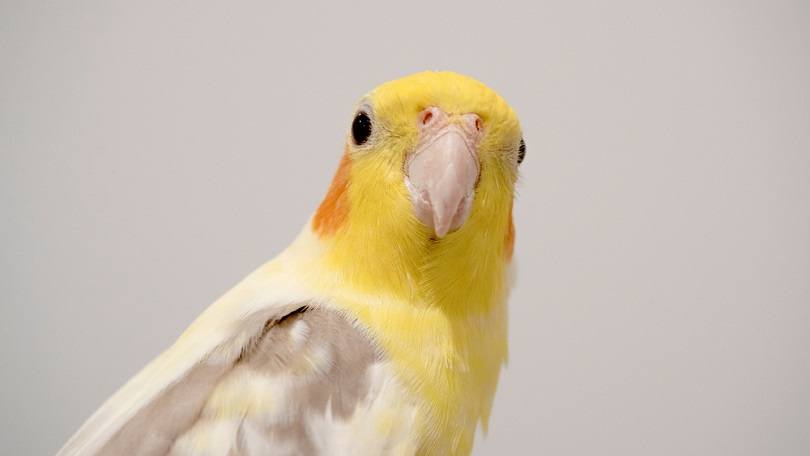

Caring for the Lutino Cockatiel
Proper Cage Size
The right-sized cage is absolutely vital for a happy cockatiel. If your cockatiel has too small a cage, they can get depressed, pent up, and nervous. This can cause all sorts of behavioral issues and negative effects for your Lutino that you can easily avoid.
While Lutinos may be smaller parrots, they still have long tail feathers and a tall crest. For one single Lutino cockatiel, you should have a cage at least 24″ x 24″ x 24″ or larger.
Toys & Activities
Your Lutino will spend a lot of time fooling around and having fun. The more colorful, textured toys they have, the happier they’ll be. You can buy your cockatiel toys designed for parrots, or you can try your hand at making some of your own.
Cockatiels are stimulated by bright, shiny colors and objects. Make their cage exciting with hanging toys, noisemakers, and pops of color.
Cage Mates
Lutinos thrive on companionship, and they make excellent cage mates. If two cockatiels haven’t been raised together, they might take a minute to warm up, but they should be best friends before long.
If you have an aviary, Lutino cockatiels pair very well with other species. They seem to match well with parakeets and finches.
Grooming
Lutino Cockatiels benefit from regular grooming to keep them their healthiest.
Bathing
Since cockatiels have a build-up of feather dust, you should offer them a lukewarm bath twice every week. Bathing will help reduce the dust and keep their exteriors clean. Cockatiels adore bath time. They get to dip in and splash around—it’s usually one of their favorite activities.
Wing Clipping
To protect your bird and prevent injury, it’s very crucial to trim a few long-flight feathers so they can’t try to fly away. Unless you’re experienced in wing trimming, you shouldn’t ever attempt to do this on your own. Trust a vet or professional instead.
Beak and Nail Filing
Lutino cockatiels have continually growing beaks and nails, so they will need to be filed down to an appropriate level. They don’t need to be filed down very often, and your vet can do it at the same time as wing clips.

Common Health Problems
Cockatiels require specific conditions to thrive. If their environment lacks the right temperature, diet, or cage size, it can negatively affect their health.
Many illnesses mimic the same signs, and sometimes, your cockatiel won’t show any adverse signs until the sickness is pretty advanced. So, staying on top of veterinary appointments and providing a healthy environment can reduce the chances your bird will get sick.
- Respiratory problems
- Discharge
- Bleeding
- Lumps and bumps
- Swollen eyes
- Weight loss
- Abnormal feathering
- Lethargy
Specific diseases and illness in cockatiels include:
- Lutino cockatiel syndrome
- Malnutrition and vitamin deficiencies
- Arthritis
- Liver problems
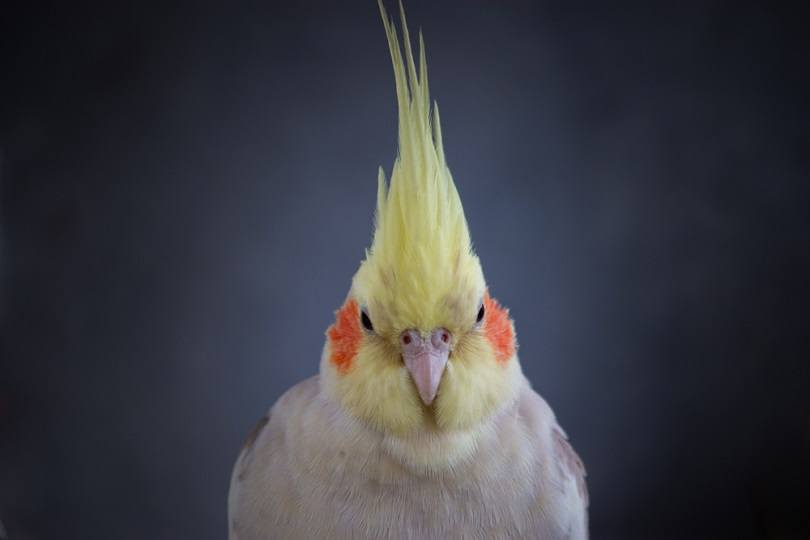
Diet and Nutrition
Your Lutino will benefit from high-quality birdseed and pellets designed for cockatiels as their primary diet source. However, you can also occasionally provide treats, such as healthy fruits and veggies. It’s better to serve fruits with less sugar.
- Leafy, green veggies
- Melon
- Papaya
- Kiwi
- Berries
- Honey sticks
- Apple
- Mango
- Orange
- Apricot
- Cantaloupe
Always serve treats in small, edible portions. You want all fruits and veggies to be easy to pick apart and digest.
Here are some dangerous foods to avoid:
- Avocado
- Fruit pits and seeds
- Dairy
- Chocolate
- Mushrooms
Exercise
Exercise is crucial to the overall well-being of your bird. You need to ensure they have plenty of time outside their cage to roam, glide, and fly. Working with your bird to do tricks and learn new skills also counts as exercise.
Do your best to create challenging mazes, puzzles, and other activities so your cockatiel uses their brain and body strength to complete them.
Make sure that your cockatiel stays safe in the process, especially if they’re gliding or flying around a room. Turn off the ceiling fans, remove mirrors, and pull the blinds to prevent injuries during flight.

Where to Adopt or Buy a Lutino Cockatiel
If you’re ready to buy a Lutino cockatiel, the big question is where to look. Many pet chains have plenty of cockatiels, which can be a one-stop shop if you buy all of their supplies, too.
Some feel more comfortable buying from a private breeder. You have more control over knowing where your cockatiel came from and what kind of environment they were raised in.
If you buy a Lutino cockatiel from a pet shop, you can expect to pay roughly $80 to $150. A breeder’s price may fluctuate a little more depending on markings, mutations, and quality. You can pay anywhere between $80 and $250 if you buy from a breeder.


Conclusion
A Lutino cockatiel is an ideal companion if you’re a bird lover. They will love every moment spent with you and bond well in pairs and trios. You can take them out to relax while you watch TV or teach them amazing tricks. They might even sing a tune they hear often.
If you want an agreeable bird that isn’t frisky like some spirited parrots, the Lutino cockatiel should be at the top of your list.
Featured Image Credit: Nicky Jacobs, Shutterstock
